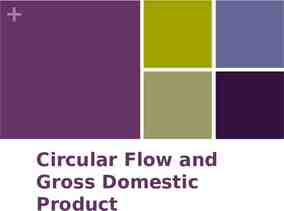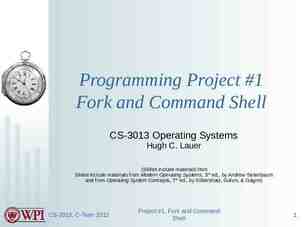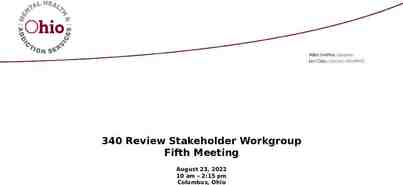Purchasing and Inventory 1
29 Slides3.10 MB

Purchasing and Inventory 1

Learning Objectives Describe the steps required to implement an inventory control program. Name factors to consider in procurement of supplies. Develop a monitoring plan for the inventory system. Discuss the importance of documentation related to purchasing and inventory. Purchasing and Inventory-Module 4 2

Scenario Your laboratory is asked to gear up for a potential flu epidemic. What purchasing and inventory factors do you need to consider in planning for this process? What problems might you encounter in planning and implementation? Purchasing and Inventory-Module 4 3

The Quality Management System Organization Personnel Equipment Purchasing & Inventory Process Control Information Management Documents & Records Occurrence Management Assessment Process Improvement Customer Service Purchasing and Inventory-Module 4 Facilities & Safety 4

Benefits of an Inventory Management Program Supplies and reagents always available Purchasing and Inventory-Module 4 Minimize wastage Quality maintained Stay within budget 5

Inventory Management Challenges Balance between stock availability and expiration dates. Life-span of laboratory reagents varies: Instock RIA reagents: 3 to 8 weeks API kits: 4 to 12 months Antisera: 1 to 4 years Antibiotic disks: 2 to 3 years Ready-to-use culture media: 1 to 2 months Dehydrated culture media: 3 to 5 years Purchasing and Inventory-Module 4 Expiry Date 6

Key Components for Purchasing and Inventory Management Store Vendor Qualifications Purchase Contract Assess conditions Inspect Test Handle Maintain Delivery Laboratory USE Log book Expiry date Rotate stock Other laboratories Post use tracking Purchasing and Inventory-Module 4 7

Establish a System to Qualify and Select Vendors define criteria for supplies and services to be purchased use information from other laboratories evaluate before purchase and after receipt Purchasing and Inventory-Module 4 8

Purchasing Considerations Understand government requirements Review Negotiate prices Contracts Determine payment mechanisms Purchasing and Inventory-Module 4 Assure reliable availability, delivery 9

How to Implement Inventory Control Maintain inventory system in all storage areas Assign responsibility Analyze needs INVENTORY CONTROL Establish system for receiving, storing Develop forms and logs Purchasing and Inventory-Module 4 Establish minimum stock needs 10

Analyze Needs Conduct analysis of supply and reagent needs by: listing all tests in laboratory identifying all supplies needed for each test using available information to estimate usage Purchasing and Inventory-Module 4 11

Analysis of Needs: Information Required Unit Unitofofcount count Storage Storagespace space, , conditions conditions Usage/month Usage/month Item Item description description Order Orderlead leadtime/ time/ delivery deliverytime time Purchasing and Inventory-Module 4 (quantification) (quantification) Priority PriorityLevel Level 12

What is Quantification? Quantification Quantification is is aa process process for for calculating calculating how how much much is is required required of of any any particular particular item item for for aa given given period period of of time. time. Purchasing and Inventory-Module 4 13

Quantification: When? as part of annual health care planning when implementing a new health program in preparation for a potential or newly identified epidemic Purchasing and Inventory-Module 4 14

Quantification: How? consumption-based method morbidity-based method Purchasing and Inventory-Module 4 15

Quantification: Consumption-based based on the actual usage must take into account: health supplies actually used wastage–expired or spoiled supplies supplies out of stock for more than 15 days during any time of the year Purchasing and Inventory-Module 4 90 80 70 60 50 40 30 20 10 0 Slides Immersion Oil Collection containers 1st Qtr 2nd Qtr 3rd Qtr 4th Qtr 16

Quantification: Morbidity-based based on the actual number of episodes must take into account: population size disease incidence accuracy of morbidity data treatment guidelines 180 160 140 120 100 80 60 40 Influenza Diarrhea TB 20 0 1st Qtr 2nd Qtr 3rd Qtr 4th Qtr Purchasing and Inventory-Module 4 17

Inventory Control: Documentation Maintain records: date received lot number pass or fail acceptance criteria date placed in service or disposition May be useful to keep records in stockroom. Purchasing and Inventory-Module 4 18

Stock Logbook Includes: name and signature date of receipt quantity date of expiry minimum stock stock balance Other information: shelf number destination Purchasing and Inventory-Module 4 19

Inspect new orders at time of delivery verify contents check integrity record date each item received record expiration date store new shipment behind existing shipment create or update records Purchasing and Inventory-Module 4 20

Storage of Inventory Storeroom clean organized lockable well-ventilated no direct sunlight good, sturdy shelving items within reach safety precautions available Purchasing and Inventory-Module 4 21

Shelving 1 2 3 Follow safety precautions Purchasing and Inventory-Module 4 22

Shelf Organization avoids “losing” a product saves time systemizes storage space Number cold room or refrigerators and freezers and label shelves Purchasing and Inventory-Module 4 23

Use clearly visible dating labels date opened date expires Purchasing and Inventory-Module 4 24

Continuous Monitoring of Inventory Assign responsibility Update records Inventory Control Maintain inventory system in all storage areas Conduct weekly physical counts Purchasing and Inventory-Module 4 25

Computerized Stock Management Advantages: exact current state of stock, product classification management of expiration dates statistics planning purchase orders management of possible distribution makes inventory tasks easier Drawbacks: an on-site computer is needed requires trained staff Purchasing and Inventory-Module 4 26

Summary A well-managed laboratory will have a system for inventory maintenance and purchasing. The system will require planning and monitoring: analyzing needs, developing forms and procedures, and maintaining an inventory. The laboratory will maintain an inventory system for all reagents and supplies used in the laboratory. Purchasing and Inventory-Module 4 27

Key Messages Managing inventory results in: increased laboratory efficiency and effectiveness assurance that patient or clinical needs are met products available when needed Purchasing and Inventory-Module 4 28

Organization Personnel Equipment Purchasing & Inventory Process Control Information Management Documents & Records Occurrence Management Assessment Process Improvement Customer Service Purchasing and Inventory-Module 4 Questions? Comments? Facilities & Safety 29






